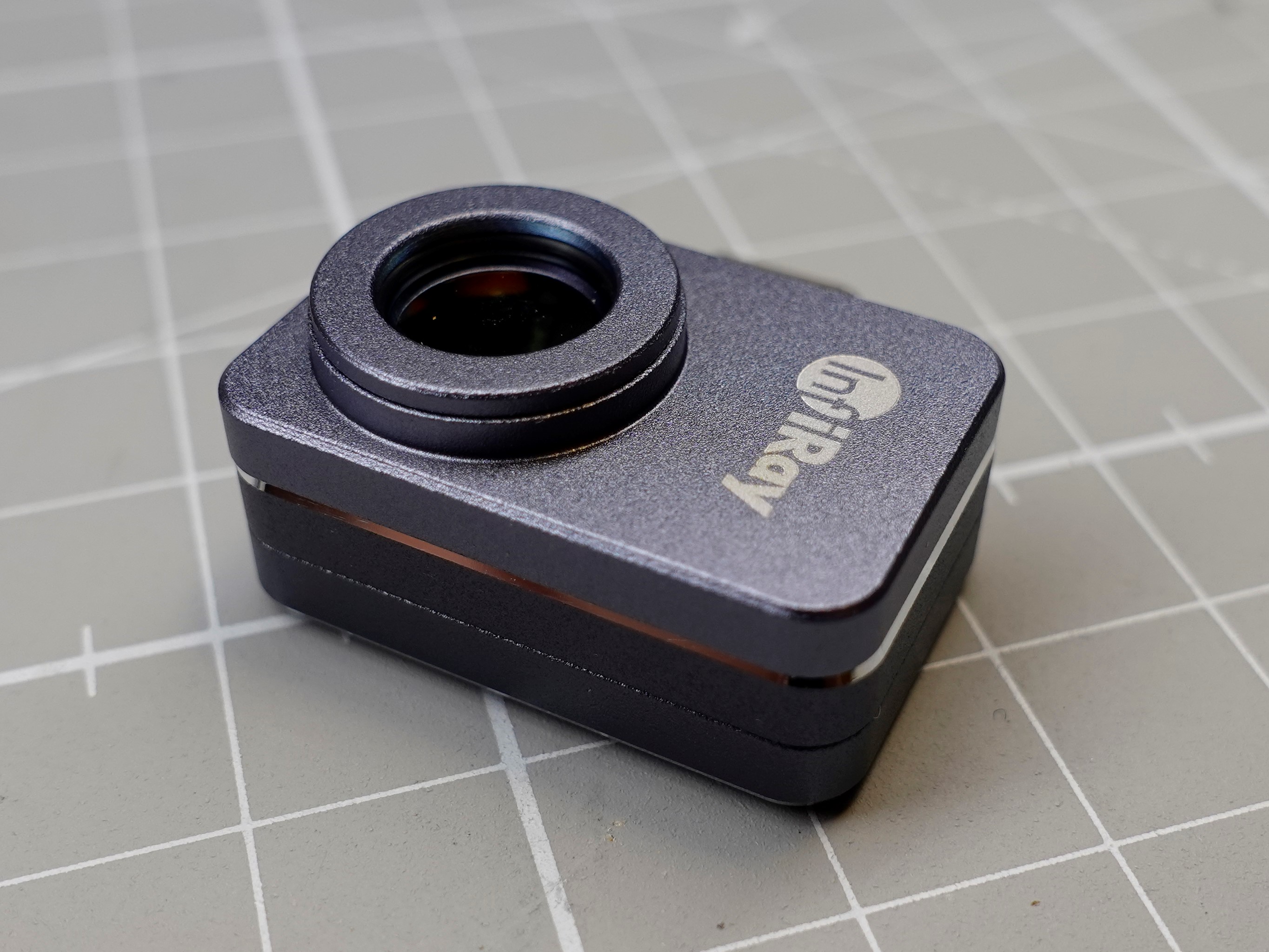
The InfiRay P2 Pro’s thermal imaging sensor has a resolution of 256 × 192 pixels. This value is significantly higher than the resolution of the thermal imaging camera in the Flir One Pro, which we normally use for our tests. The camera from the top dog Teledyne only manages 160 × 120 pixels. As a result, you would think that InfiRay’s camera would provide a better image. However, thanks to intelligent post-processing and a superior app, the Flir One Pro’s images often look much better than the InfiRay P2 Pro in terms of image quality. Our test device, or more precisely its companion app, relies too much on the small thermal camera’s superior image sensor.
Upon closer inspection, we noted quite a strong fisheye effect on the images we took. There have long been corresponding algorithms to straighten out these types of images if needed. It should also be mentioned that fisheye lenses in front of cameras can also have their advantages since they provide a true-to-area image instead of a true-to-angle image. Thus, determined average temperatures are more accurate in one area. However, the InfiRay app doesn’t offer an image straightening feature.
In one area, the P2 Pro is capable of much more than the Flir One Pro – only our test device features a macro lens. This lets you view even the smallest of details in high resolution. We used the camera to help locate a fault on a circuit board and as a result, we were able to check the smallest of components. We would not have been in with a chance of doing this using the Flir One Pro. The macro lens has a fixed focus of about 5 cm.
Another thing which the InfiRay P2 Pro clearly does better is video recording. With a sample rate of 25 Hz, the infrared camera is able to record considerably smoother videos than our Flir. This higher frame rate is especially helpful when it comes to analyzing movable parts.
Source link
 notebook.co.id informasi dan review notebook laptop tablet dan pc
notebook.co.id informasi dan review notebook laptop tablet dan pc